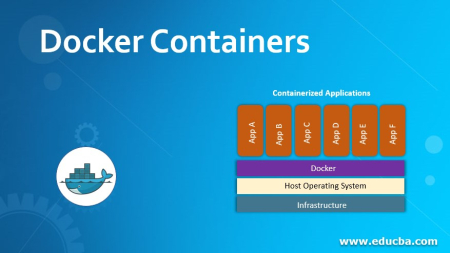Optimizing Agile Project Management with Kanban Methodology
-
07/05/2023
-
1121
-
0
Kanban methodology offers a powerful framework for Agile project management, helping teams optimize their workflow and increase efficiency. In this article, we will explore the best practices and techniques for the successful implementation of Kanban in your organization.
Related posts
How to increase app ranking for iOS and Android apps, games
The best 3D games on App Store and Google Play 2023
1. Understanding the Kanban Methodology
Kanban is an Agile project management methodology that emphasizes visualizing and optimizing workflows to increase efficiency and productivity. Here are the main aspects of understanding when it comes to the Kanban methodology:
The principles of Kanban: The core principles of Kanban are to visualize work, limit work in progress, manage flow, make process policies explicit, implement feedback loops, and improve collaboratively and evolve experimentally.

Understanding the Kanban Methodology, Source: Asoservice.com
The Kanban board and visualization: A Kanban board is a visual representation of the workflow stages and the tasks that need to be completed in each stage. This board can be physical or digital and can help team members see the status of tasks at a glance.
Limiting work in progress (WIP): The Kanban methodology emphasizes the importance of limiting the number of tasks that are in progress at any given time. This helps teams avoid overloading their work capacity and increases focus on completing tasks.
By understanding these principles, utilizing Kanban boards, and limiting WIP, teams can optimize their workflow and improve efficiency.
2. Implementing Kanban in Your Organization
Implementing Kanban methodology in your organization requires careful planning and execution to ensure that the methodology is properly integrated and effective. Here are some key steps to consider when implementing Kanban:
Define your workflow: To begin implementing Kanban, you must first understand the workflow of your team or organization. Break down your workflow into stages and identify any bottlenecks or areas for improvement.
Create your Kanban board: Create a visual representation of your workflow by setting up a Kanban board. This board should include columns for each stage of the workflow, as well as columns for tasks that are waiting to be started, in progress, and completed.
Establish work-in-progress (WIP) limits: Set WIP limits for each column on your Kanban board to ensure that your team doesn't take on too much work at once.
Implement continuous improvement: Kanban methodology emphasizes continuous improvement, so be sure to regularly review your workflow and identify areas for improvement.
Foster a culture of collaboration: Kanban methodology works best when teams work together collaboratively. Encourage team members to communicate openly and share information to help optimize workflow.
By implementing Kanban in your organization, you can streamline your workflow, optimize efficiency, and improve collaboration among team members. Additionally, app install ads can be integrated with app store optimization (ASO) efforts to improve app discoverability and drive even more downloads.
3. Managing Workflows with Kanban Methodology
Managing workflows with Kanban methodology involves using a visual board to track tasks, establish work-in-progress (WIP) limits, and focus on continuous improvement. Here are some key practices for managing workflows with Kanban methodology:
Create a visual board: A Kanban board is a visual representation of your workflow that shows the different stages of your process. It can be a physical board or a digital tool, such as Trello or Asana.
Establish WIP limits: Kanban methodology is focused on limiting WIP to improve flow and reduce waste. Set WIP limits for each stage of your process to prevent overload and optimize productivity.
Prioritize tasks: Use priority labels or color-coding to indicate which tasks are most important or urgent. This will help team members focus on what needs to be done first.
Measure cycle time: Measure the time it takes for a task to move from one stage to another. This helps to identify bottlenecks and optimize the flow of work.
Review and improve: Regularly review your Kanban board and identify any areas for improvement. Use retrospective meetings to discuss what worked well and what could be improved in the next sprint.
By managing workflows with Kanban methodology, you can optimize ASO for your team's productivity, reduce waste, and deliver high-quality work in a timely manner.
4. Establishing Policies and Rules
When implementing the Kanban methodology, it is essential to establish policies and rules to guide the team's workflow. The following ideas can help:
Define policies: Establish clear policies for how work items will be added to and moved across the board.
Set WIP limits: Implement work-in-progress (WIP) limits to prevent overloading team members and ensure a smooth workflow.
Establish service level agreements (SLAs): Set SLAs to ensure work is completed within a specified time frame.
Create a process manual: Document the policies and rules in a process manual to serve as a reference for the team.
By establishing clear policies and rules, teams can effectively manage their workflow and ensure they meet their objectives.
5. Continuous Improvement with Kanban Methodology
Continuous improvement is a core principle of Kanban methodology, and the following ideas can help teams achieve it:
Conduct regular retrospectives: Hold regular retrospectives to reflect on the team's performance and identify areas for improvement.
Use metrics to measure performance: Use metrics such as lead time and cycle time to track performance and identify bottlenecks.
Visualize the workflow: Use a Kanban board to visualize the workflow and identify areas for improvement.
Encourage experimentation: Encourage team members to experiment with new approaches and ideas to improve their work processes.
Implement small changes: Implement small changes gradually to avoid disrupting the team's workflow and track their impact over time.
By continuously assessing their performance and making small, incremental changes, teams can optimize their workflow and continuously improve their processes.
6. Scaling Kanban for Larger Projects and Organizations
Scaling Kanban for larger projects and organizations can be challenging, but the following ideas can help:
Establish a shared understanding: Ensure all team members have a shared understanding of the Kanban methodology, its principles, and its practices.
Define and visualize the value stream: Define and visualize the entire value stream, from ideation to delivery, to identify opportunities for optimization.
Implement policies and rules: Establish policies and rules that apply across the entire organization to ensure consistency and alignment.
Use a portfolio Kanban board: Use a portfolio Kanban board to manage multiple projects and prioritize work based on their strategic importance.
Foster collaboration and communication: Encourage collaboration and communication across teams and departments to break down silos and improve alignment.
By scaling the Kanban methodology effectively, organizations can optimize their workflow, improve alignment and collaboration, and achieve their strategic goals. You can increase your app users by buying keyword app installs.
Conclusion
Kanban methodology is a powerful tool for optimizing agile project management, and by implementing its best practices and techniques, organizations can achieve greater efficiency and continuous improvement in their workflows.
Related posts
https://asoservice.com/microsoft-store-app-reviews
https://asoservice.com/macos-app-reviews-ratings
Thanks so much for reading this article.
Source: https://asoservice.com/




































Leave a Reply
Your e-mail address will not be published. Required fields are marked *